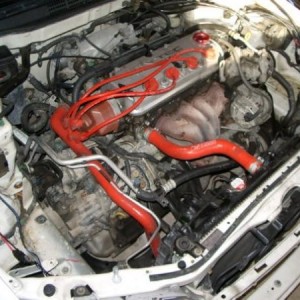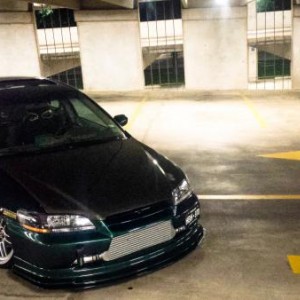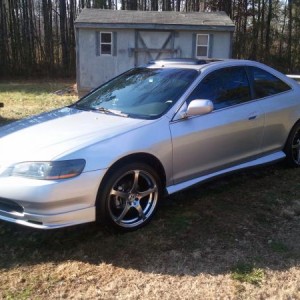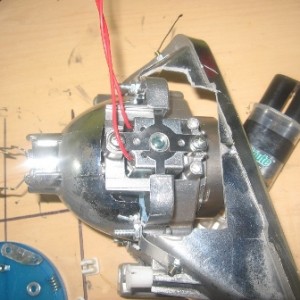Most of the time, when doing an engine build, there is a little bit of milling done to get a good gasket sealing surface.
In order to determine your new compression ratio, first you get the combustion chamber size:
First find the combustion chamber size. This can be calculated from the compression ratio, and displacement. It boils down to dividing the displacement by the compression ratio - 1. divide the result by the number of cylinders to get a per cylinder combustion chamber size.
For the F23A1, that's a CR of 8.8:1 and a displacment of 2254cc, so a total combustion chamber size of 288.97cc or 72.24cc per cylinder.
Now, change the combustion chamber by the volume you're milling off. Again, the F23A1 has a bore of 86mm, so that's an area of about 58.1 square cemtimeters for the bore. Multiply that by the amount bored from both the block and head. .001" = 0.00254 cm, so that's about 0.15cc per thou.
So a .01" mill (10 thousands, or .005" each from the block and head -- pretty typical for block and head on a rebuild) on the head and block total would change the combustion chamber size to 70.74 cc. With the displacement (per cylinder) of 563.5cc, that would mean a compression ratio of 8.96:1. ((563.5+70.74)/70.74)
Take .01" from both the block and head and you get a combustion chamber of 69.24cc, for a compression ratio of 9.14:1 ((563.5+69.24)/69.24)
Often times, to keep compression rations lower, the Supra guys will go to a thicker head gasket, which increases the combustion chamber volume (particularly after having head and block milled) to allow more boost.
Therefore, you also much factor in your head gasket thickness when calculating the final compression ratio, for any change from the stock thickness. Many aftermarket head gaskets will be thicker, in order to compensate for the milling of the block and head that will often happen when an engine is rebuilt.
Anyway, that's how to calculate the change in compression ratio for a milled block and head.








